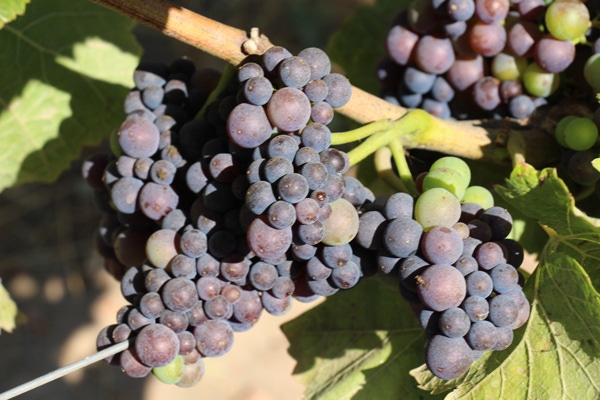
San Joaquin Valley growers face two different markets for this year’s crop
“The 2014 harvest is a story of two different markets,” says Jeff Bitter, vice president for operations with Allied Grape Growers, based in Fresno, Calif. The wine grape marketing cooperative has nearly 600 grower-members in California’s major wine grape regions.

For many wine grape growers in the San Joaquin Valley, where ideal growing weather resulted in an early harvest of a crop that was average or slightly smaller in size, the 2014 season has been a good one. For the rest – not so much.
“The 2014 harvest is a story of two different markets,” says Jeff Bitter, vice president for operations with Allied Grape Growers, based in Fresno, Calif. The wine grape marketing cooperative has nearly 600 grower-members in California’s major wine grape regions.
Growers who sold their grapes to wineries under terms of existing multi-year contracts -- roughly 80 percent to 85 percent of growers in this area – received good prices for their crop.
Meanwhile, the remaining growers, those whose contracts expired last year, have faced a daunting challenge – trying to sell their grapes on the spot market for a price that would cover their cost of production.
For most of them, their misfortune was a matter of unfortunate timing. “They just happened to sign three-year contracts in 2011, which expired at the end of last year. When those deals were originally signed, who knew that the market would turn against those growers this particular season?”
Bitter cites several reasons for the reluctance of wineries to offer growers new multi-year contracts in 2014:
Low demand for grapes following two large harvests in a row, which has left wineries with ample inventories of wine.
Lackluster sales over the past two years of wines made from grapes grown widely in the San Joaquin Valley. These wines, typically selling for under $10 a bottle, gained popularity during the recent recession. But, with the economy and consumer confidence picking up steam, shoppers have been trading up the price scale to buy higher-priced wines made from grapes produced in California’s more prestigious wine growing regions, like the North Coast.
The relative ease with which winemakers can substitute foreign supplies of bulk wine at the lower end of the price scale due to consumers that are origin indifferent. By contrast, consumers purchasing wines above $10 per bottle are much more in tune to origin and in many cases make that a primary factor when buying wine, Bitter notes.
Since a portion of all contracts expire in any given year, next season other Valley growers may find themselves in a similar predicament as those forced to sell on the spot market in 2014.
Bitter expects some of these growers with newly-expired contracts will be able sign new contracts in 2015, for such reasons as strong personal relationships or historical quality. However, he suspects as many as half of the growers whose contracts expired with this year’s harvest may be on the spot market looking for a new home in 2015.
Right now, of course, there’s no way to predict with any precision the type or number of contracts that may be signed next year. However, Bitter notes that, with seemingly adequate supplies of foreign and domestic wine, wineries may be entering 2015 with less motivation to buy early than they have had in recent years. On the flip side, they will also be under less obligation in 2015 to buy contacted grapes due to recent contract expirations. That should help create a marketplace for grapes that are available.
“I’ve heard of virtually no one writing new three-year contracts starting this year,” he says. “Just about all wineries that bought grapes on the spot market this year almost certainly did so on a one-year basis.
“We may see more buying and selling activity in 2015 than this year,” he says. “But any new contracts are likely to be at lower initial prices than those that expired this year.”
The wild card in all this is the continuing drought, and the impact that dry soils and declining quality of irrigation water may have on wine grape production in the San Joaquin Valley next year, he adds.
The Valley’s 2014 wine grape harvest was also marked by what may have been the smallest Thompson Seedless crush in two decades.
By the time growers had to decide whether to make raisins or to harvest green grapes, wineries weren’t buying Thompson seedless for concentrate or wine, Bitter reports. “As a result, most growers had no choice but to make raisins,” he says. “Because of that, along with low yields and declining acreage of Thompson Seedless, this season’s crush probably won’t exceed 100,000 tons.”
About the Author(s)
You May Also Like



